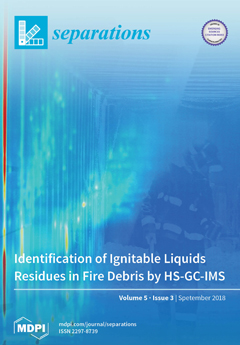Gac (
Momordica cochinchinensis Spreng.) seeds contain bioactive compounds with medicinal properties. This study aimed to determine a suitable solvent and extraction technique for recovery of important compounds, namely, trypsin inhibitors, saponins, and phenolics. The antioxidant capacity and total solids of derived extracts
[...] Read more.
Gac (
Momordica cochinchinensis Spreng.) seeds contain bioactive compounds with medicinal properties. This study aimed to determine a suitable solvent and extraction technique for recovery of important compounds, namely, trypsin inhibitors, saponins, and phenolics. The antioxidant capacity and total solids of derived extracts were also measured. Water with conventional extraction method gave the highest value of trypsin inhibitor activity (118.45 ± 4.90 mg trypsin g
−1) while water-saturated
n-butanol and methanol extracts were characterized by their highest content of saponins (40.75 ± 0.31 and 38.80 ± 2.82 mg AE g
−1, respectively). Aqueous extract with microwave assistance achieved the highest phenolics (3.18 ± 0.04 mg GAE g
−1). As a measure of antioxidant capacity, the 2,2′-azino-bis(3-ethylbenzothiazoline-6-sulfonic acid) diammonium salt (ABTS) assay gave highest value to the aqueous microwave extract (23.56 ± 0.82 μmol TE g
−1) while the ferric reducing antioxidant power (FRAP) assay gave highest values to water-saturated
n-butanol and 70% ethanol extracts (5.25 ± 0.04 and 4.71 ± 0.39 μmol TE g
−1, respectively). The total solids value was highest using water with microwave assistance (141.5 g kg
−1) while ultrasound treatment did not improve any extractions. Therefore, trypsin inhibitors are suitably recovered using water while water-saturated
n-butanol or methanol is for saponins, both using a conventional method. Microwave extraction is suitable for phenolics recovery. These conditions are recommended for an efficient recovery of bioactive compounds from defatted Gac seeds.
Full article





